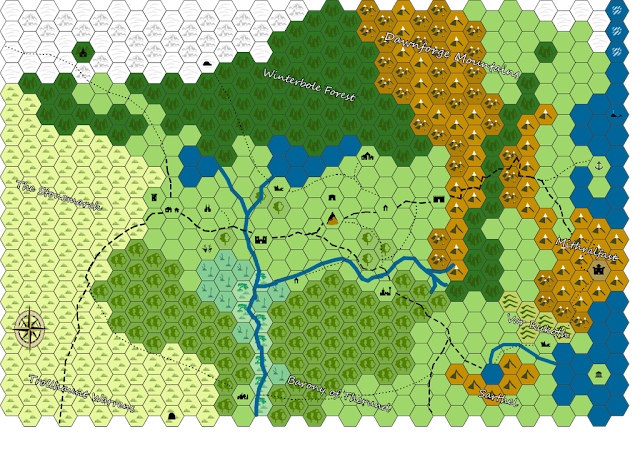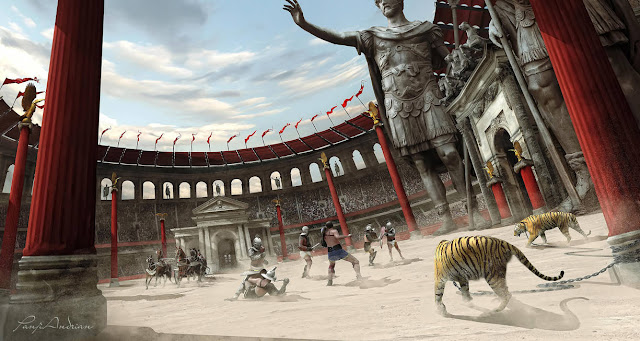Dnd 5e: A Brief Guide to West Marches Style Play
What is "West Marches"?
I am still unsure who exactly coined the term, when I originally planned my own West Marches campaign, this blog is where I started after watching Matt Colville's video on the subject. It is a style of play for tabletop roleplaying games that fills a few niches that typical campaign play does not. Many DMs tweak their own definition and I have formed my own. This was through running a weekly West Marches style campaign at a board game café a few years ago.
1. The "plot" is player driven, not imposed upon the players by the DM.
The DM may provide hooks and rumors, but the players ultimately decide the course of the action for a session. In some cases, sessions aren't even planned out until the players come to the DM and say "We want to pursue this lead" or "We want to explore the castle that sunk into the marsh".
In my game, there was a plot, but it was more of an overarching narrative that players could choose to engage with it or not. I'd make it known when things were happening in the background that may threaten their home base, but otherwise it was up to them.
2. Players consist of a rotating cast, not a continuous group.
In my case, I was running the campaign every week, but 1 player could not attend 2 weeks in a row. This allowed folks to come in and play as they pleased, aside from that one restriction. If someone couldn't make it that week, no big deal. The next person on the waitlist would get notified and bumped into the open slot. This can function any number of way for the "standard" West Marches format. You might have two separate groups that interweave and exchange members depending on who is busy and who is free. You might have a massive discord server, with multiple DMs collaborating, writing and creating different sections of the map.
At one point I had a pipe dream of running Ghosts of Saltmarsh where one party of players worked for the Traditionalist faction and the other worked for the Loyalists. It ran for a little while, but life got in the way and it did not get off the ground.
3. Exploration and Hexcrawling are emphasized.
Since the plot falls to the wayside, there is more of an emphasis on exploring interesting locales and scouring ancient ruins. In most cases this is done with a hex map of the area. Sometimes, there is a "fog of war" reminiscent of games like Warcraft or Age of Empires where players will reveal hexes as they go. (More on hexcrawls coming in a future post!)
Once a location is discovered and cleared, that location is cleared for all players. When another player creates a business, all other players can now shop there (hopefully at a discount). And when one group uncovers a lich's tomb, everyone pays the price. It is a shared persistent world experienced by everyone.
Information is also shared between players. New lore, new locations, can be shared. Usually through social media or chat services like Discord.
There can be disadvantages however...
One issue I ran into was rewards for play. This was only a problem for my game however, due to its public nature. I ended up having to develop a standardized reward system similar to how Paizo and Wizards of the Coast run organized play.
Another issue was organization. Luckily I was working part time at the time, but putting together sessions and organizing players became quite taxing. If your players don't organize themselves, be prepared to organize quite a bit.
All in all the West Marches is a unique and interesting way to play tabletop roleplaying games that can accommodate a large group of players to participate in a homebrew campaign that puts more power to the players with the DM being flexible and improvisational while still using their own creativity.


Comments
Post a Comment